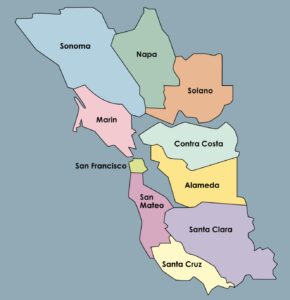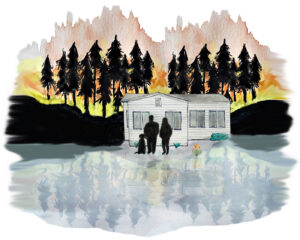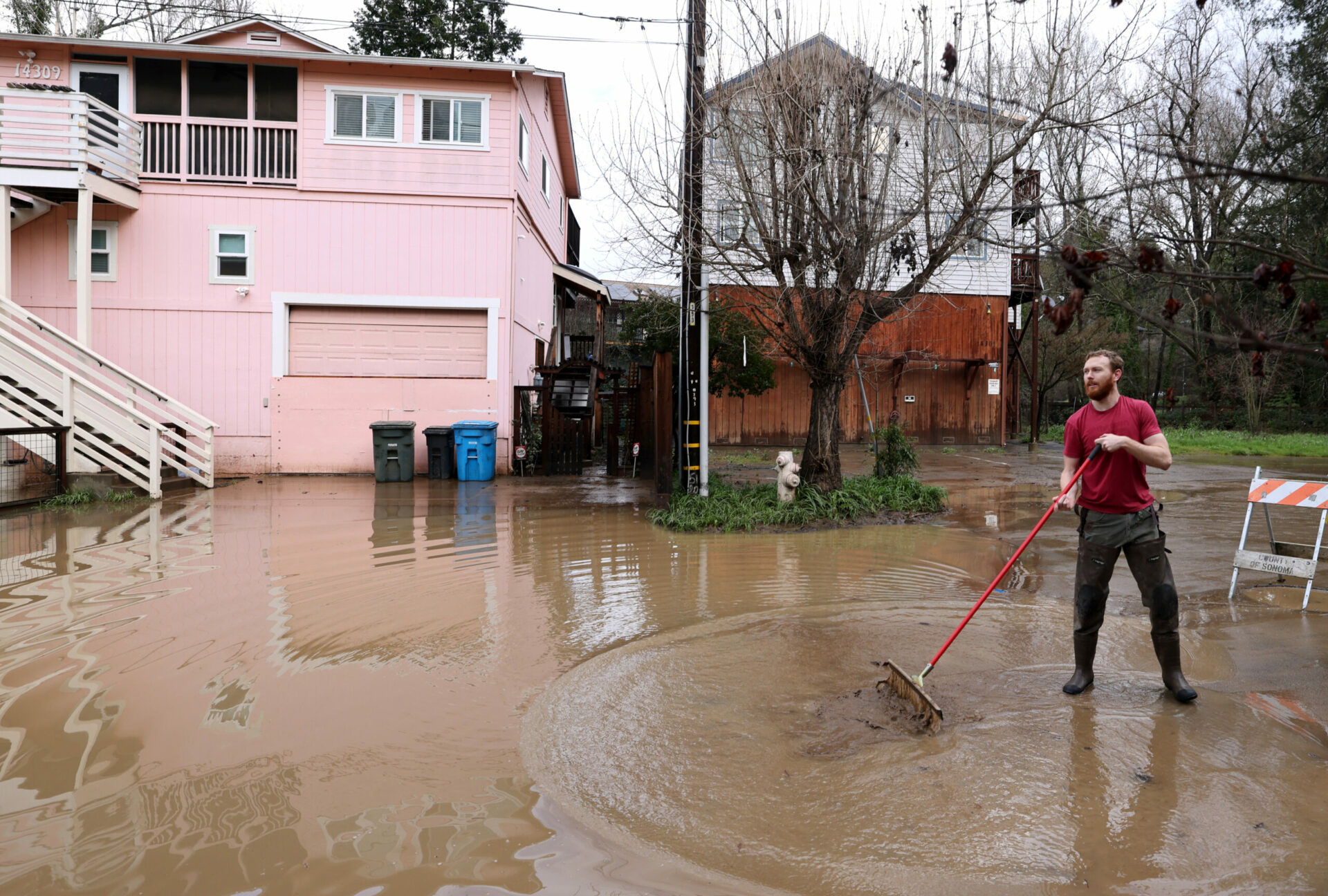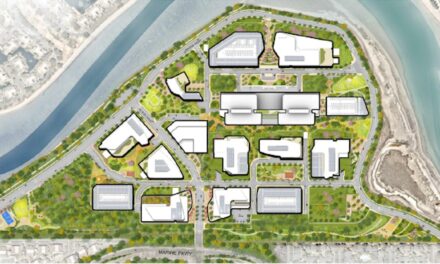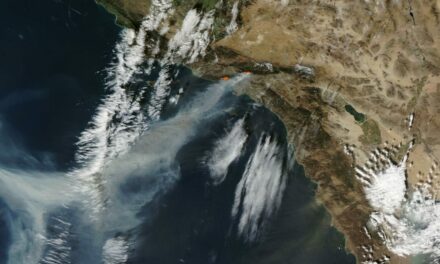Wine Country County Counts for Half of California’s Repeat Home Flooding
Photo: Beth Schlanker, Press Democrat
On February 15, 1986, somewhere along the Russian River amid the quiet woodlands of unincorporated Sonoma County, a home flooded.
The same home flooded again in 1995. Then again in 1997. And again and again.
By 2019, the same property had flooded eight times since the 80s, and received more than $750,000 in disaster money from the National Flood Insurance Program. In nearby neighborhoods, dozens of other properties were flooding every five years or more on average, and one unit flooded 20 times — almost every other year. They are among more than 40,000 parcels nationwide that have suffered multiple catastrophic floods since 1978, according to an interactive map recently updated and re-released by the Natural Resources Defense Council called Losing Ground: Severe Repetitive Flooding in the United States.
Losing Ground reveals that Sonoma has more of these “Severe Repetitive Loss Properties” than any other county in the Western U.S. Unearthing that tidbit from the cavernous databases of the Federal Emergency Management Agency would prove near-impossible for even the savviest fact-finder, but I was able to reach the same conclusion in under a minute thanks to the map’s intuitive interface.
To create the free tool, the NRDC mapped the number of Severe Repetitive Loss Properties from FEMA’s data in every county in the U.S., for every year from the late 1970s to 2022. Perhaps more importantly for preventing future flooding, the map also shows how many properties underwent efforts to reduce flood risk, also called “mitigation,” and what proportion had insurance in any given year at the county, state, or national level.
The tool houses lots of details without sacrificing simplicity in viewing and comparing the data — a feat I found far more impressive after poking through some of the source information. My Internet browser balked at loading subsets of the nearly 45,000 rows of data, and unknown acronyms occasionally led to dry FEMA documents. But viewing the source data alongside the Losing Ground map led to some surprising insights that would be hard to glean from either one on its own — like how a quarter of all California’s Severe Repetitive Loss Properties come from a single zip code in Sonoma County that’s home to the unincorporated community of Guerneville and fewer than 5,000 people.
Ultimately, the data may only be as useful as regulators make it. Exhausted property owners and tenants in the riskiest areas are often perversely incentivized to rebuild in place. Even people with flood insurance often lack the resources to rebuild more flood-resilient structures. And in California, only one of the 300-500 repeat-offender properties has achieved a lower flood risk in any way since 2005, from setting back the property to a government buyout to engineering projects designed to improve flooding.
During the same time, Losing Ground shows a 36% increase in the number of Severe Repetitive Loss Properties in California, with more than 200 new parcels joining the ranks of the perpetually at-risk. This year-by-year breakdown reflects a sobering nationwide trend in flooding: policy and funding for solutions are far outpaced by the growth of places at risk.
Top Photo: A little pink house, the kind often on the frontlines of a lost American dream according to 1980s songwriter John Mellencamp, gets flooded during the atmospheric river rains of February 2024 in Guerneville. Photo: Beth Schlanker, Press Democrat
Other Recent Posts
Gleaning in the Giving Season
The practice of collecting food left behind in fields after the harvest is good for the environment and gives more people access to produce.
New Study Teases Out Seawall Impacts
New models suggest that sea walls and levees provide protection against flooding and rising seas with little effect on surrounding areas.
Oakland High Schoolers Sample Local Kayaking
The Oakland Goes Outdoors program gives low-income students a chance to kayak, hike, and camp.
Growing Better Tomatoes with Less Water
UC Santa Cruz researchers find the highly-desired ‘Early Girl’ variety yields more tomatoes under dry-farmed conditions.
Santa Clara Helps Homeless Out of Harm’s Way
A year after adopting a controversial camping ban, Valley Water is trying to move unsheltered people out of the cold and rain.
The Race Against Runoff
San Francisco redesigns drains, parks, permeable pavements and buildings to keep stormwater out of the Bay and build flood resilience.
Learning the Art of Burning to Prevent Wildfire
In Santa Rosa’s Pepperwood Preserve, volunteers are learning how controlled fires can clear out natural wildfire fuel before it can spark.
Martinez Residents Want More Than Apologies — They Want Protection
After a 2022 release of toxic dust and a February 2025 fire, people in the northeast Bay town are tired of waiting for safety improvements.
Weaving Fire Protection Out Of What’s Already There
A new Greenbelt Alliance report shows how existing vineyards, grasslands, and managed forests can slow wildfire and save vulnerable homes.
Fall Plantings Build Pollinator Habitats in Concord
Community groups, climate advocates and a church are coming together to plant pollinator gardens as monarchs, bees see population declines.
More
- FEMA Updates Flood Maps in Sonoma County, Santa Rosa and Windsor (July 2023)
- Atmospheric rivers drive flood damages in the western United States | Science Advances
- More U.S. homes are repeatedly flooding as the nation’s flood risk grows – The Washington Post
- Why California’s Water Extremes are Wilder than Ever April 2023, KneeDeep Times
- Two Towns Shortlisted for FEMA Millions, November 2022, KneeDeep Times

